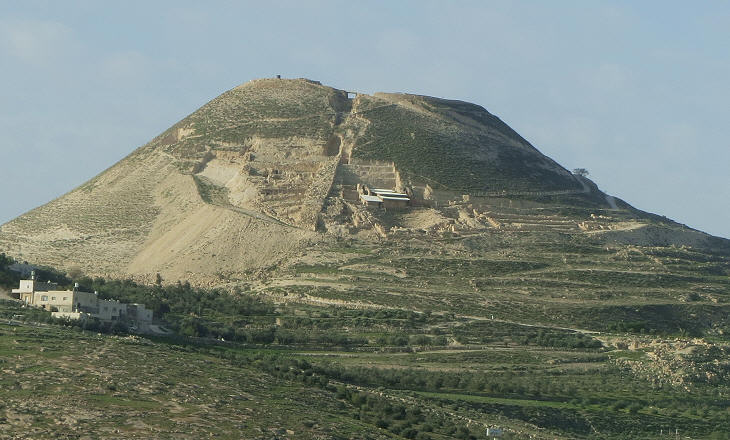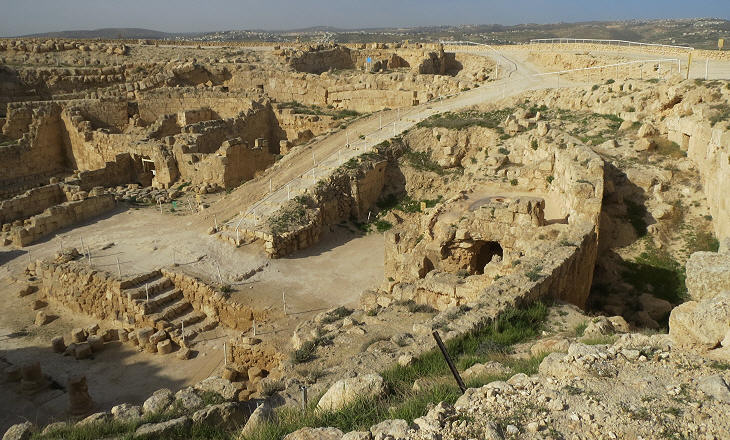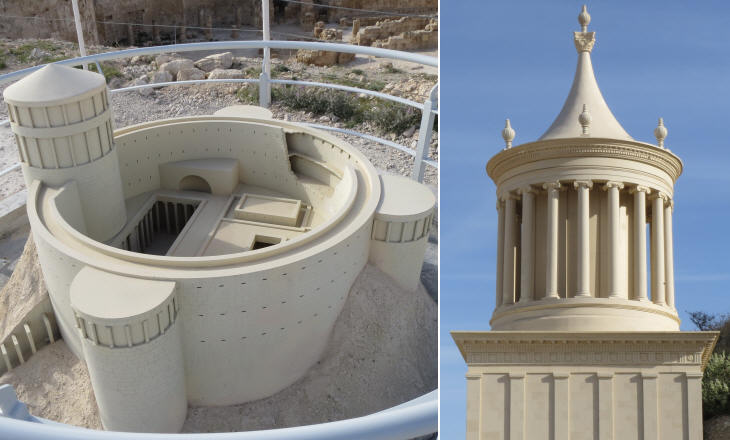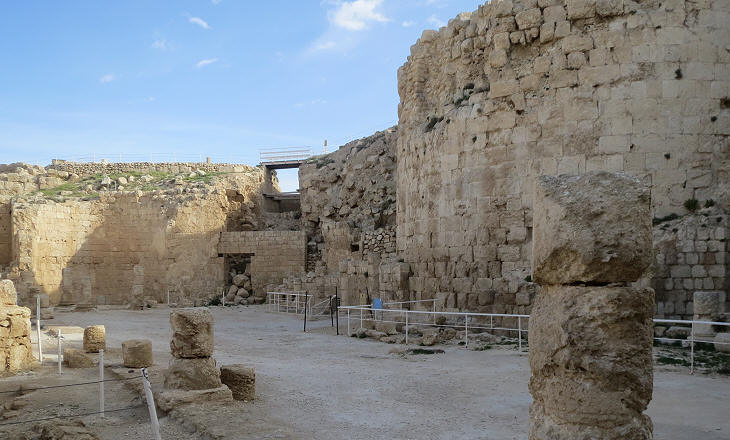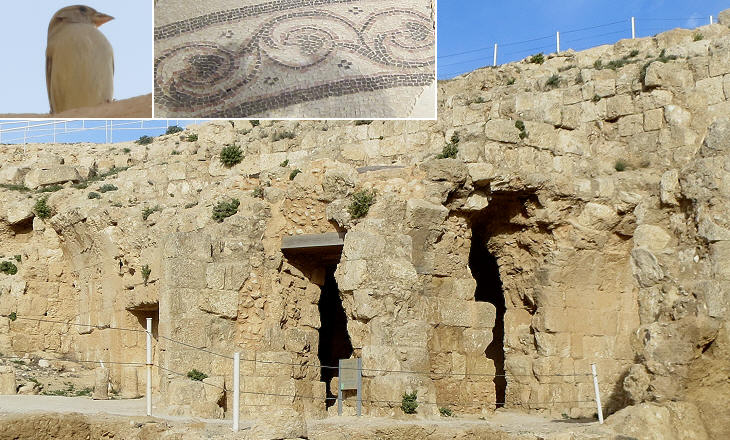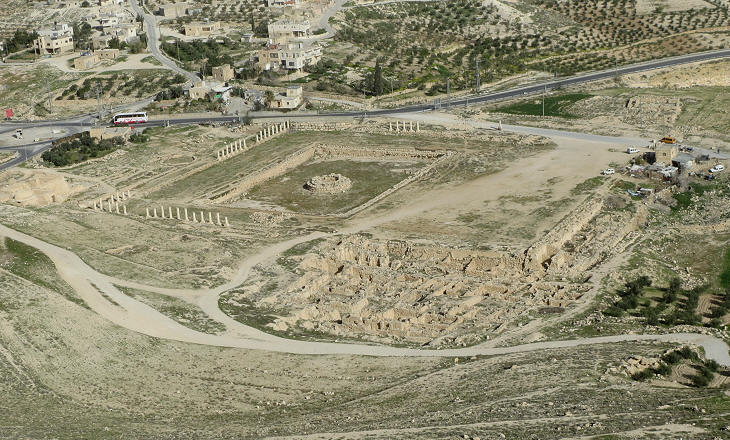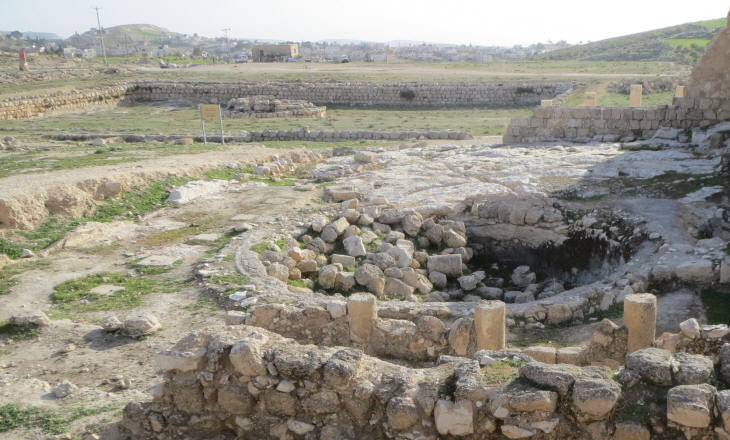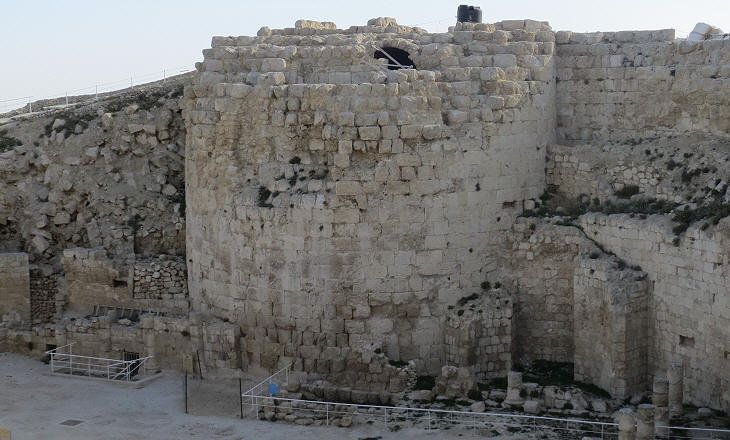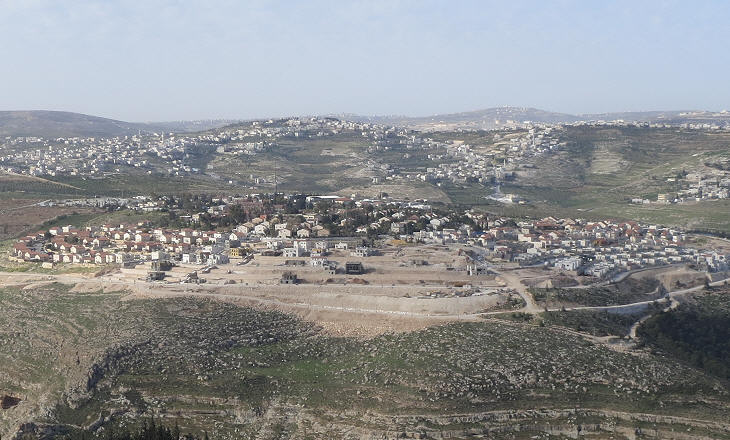  What's New! Detailed Sitemap All images © by Roberto Piperno, owner of the domain. Write to romapip@quipo.it. Text edited by Rosamie Moore. Page added in June 2013. |
 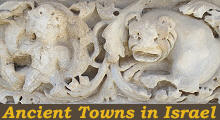 - Herodion - Herodion(relief at Scythopolis) Now in the place where Herod beat them (Jewish allies of the Parthians), and killed a great number of them, there he afterward built a citadel, in memory of the great actions he did there, and adorned it with the most costly palaces, and erected very strong fortifications, and called it, from his own name, Herodium. Flavius Josephus - The Wars of the Jews - Chapter 13:7 - Translation by William Whiston Josephus was the leader of the First Jewish Revolt in Galilee and in 67 AD he was captured by Roman general Vespasian who became emperor two years later. Josephus, who had prohesied the event, became an adviser to Titus, Vespasian's son, during the rest of the campaign. He was eventually freed and became a Roman citizen. Consistent with the Roman practice he added to his name that of the gens Flavia, the family of Vespasian and Titus. He then wrote several books on the history of the Jews which were meant for a Roman audience.
The hill chosen by Herod the Great, King of Judea in 37-4 BC, to build his palace/fortress is a landmark for its unmistakable conic shape, similar to a volcano or a woman's breast, which to some extent is man-made. It stands eight miles south of Jerusalem in the West Bank.
These reasons greatly moved the Senate; at which juncture Antony came in, and told them that it was for their advantage in the Parthian war that Herod should be king; so they all gave their votes for it. And when the Senate was separated, Antony and Caesar (Octavian/Augustus) went out, with Herod between them; while the consul and the rest of the magistrates went before them, in order to offer sacrifices, and to lay the decree in the Capitol. Antony also made a feast for Herod on the first day of his reign. The Wars of the Jews - Chapter 14 Herod owed his kingdom to the way he managed to be supported by the key political leaders of Rome. His early career was due to the patronage of Cassius, one of the leaders of the conspiracy against Caesar; he was made King of Judea mainly thanks to Antony and he retained his kingdom by becoming a close friend of Agrippa, Augustus' son-in-law (you may wish to read a page on this period of Roman history).
The first excavations were carried out in 1962 and they gradually revealed the structure of the palace/fortress. It was protected by four round towers one of which had a greater size; the circular shape of the complex housed a rectangular courtyard which was in the shade almost all day, thus leading archaeologists to think that the palace was used as a summer residence. The model of the palace/fortress is very much based on the actual evidence of the ruins. In May 2007 Professor Ehud Netzer reported the discovery of the base of a mausoleum. Its model is therefore hypothetical and is based on other ancient mausoleums such as Gumuskusen Mausoleum at Mylas and the tombs in the Kidron Valley outside Jerusalem.
The main building was structured around a long courtyard. Its columns were made up of limestone and then they were plastered and painted. The capitals were of the Corinthian order, but because the limestone is less workable than marble their decoration did not project much, as you can see in the image used as background for this page.
During his stay in Rome Herod was most likely the guest of Antony or of one of his wealthy friends. He probably had the opportunity to live in a suburban villa similar to that of Livia, Augustus' third wife. He therefore provided his residence at Herodion with some of the facilities he had seen in Rome, which perhaps were built with the assistance of Roman engineers.
In 1972 preliminary excavations at the base of the hill unearthed a lower town which included a very large courtyard surrounding a pool/reservoir having at its centre a sort of island, most likely the site of a temple. Other buildings including baths were found in the following years. The site has not been entirely investigated and at the time of our visit (March 2013) access was forbidden for safety reasons.
King Herod the Great is not a popular hero in Israel. Apart from the many crimes he committed, including the killing of some of his sons, he is charged with having been a puppet in the hands of the Romans and an unenthusiastic supporter of Jewish traditions. In addition he belonged to an Edomit family, Idumea being a territory to the south of Judea whose inhabitants were not considered 100 per cent Jewish. The opening of an exhibition dedicated to his architectural heritage at the Museum of Israel in February 2013 marks a shift in the public opinion of the country or at least in its more secular section.
Herodion became a stronghold of the Zealots, the members of a sect which had a leading role in the First Jewish Revolt (66-73 AD). According to Josephus Flavius the defenders surrendered after the Romans captured by surprise one of their leaders and threatened to crucify him. Herodion was again occupied by the rebels during the Second Jewish Revolt (132-36) and some tunnels were recently found which were used for surprise sallies. The site was eventually abandoned for centuries. Evidence of small churches indicates that perhaps some monks lived there in the VIth century.
The traditional account explaining the Jewish revolts makes reference to offences against the Jewish religion made by the Romans such as imposing the worship of the emperors, using pigs for sacrifices and banning circumcision. There were perhaps some other causes which gained the rebels the support of the population, such as the level of taxation, behaviour of the local Roman officers and privileges granted to non-Jewish ethnic groups. In order to strengthen their control of the territory the Romans promoted the farming of common land in many parts of the empire. To do this they relocated veterans or settlers from other provinces. In Africa (today's Tunisia) it appears that the local communities accepted the newcomers (see a page on Thugga), but perhaps in Judea they did not and the view of the Roman settlements enraged the Jews. Mutatis mutandis this is what occurs today in the West Bank. Move to: Introductory page Ancient Synagogues: Introduction, Korazim, Capernaum and Hamat Teverya Ancient Synagogues: Bet Alpha, Diocaesarea and Ein Gedi Caesarea Diocaesarea Mamfis (Mamshit) Masada Megiddo Necropolis of Bet She'arim Oboda (Avdat) Scythopolis (Bet She'an)  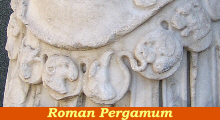 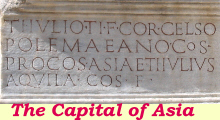 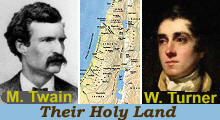 |
